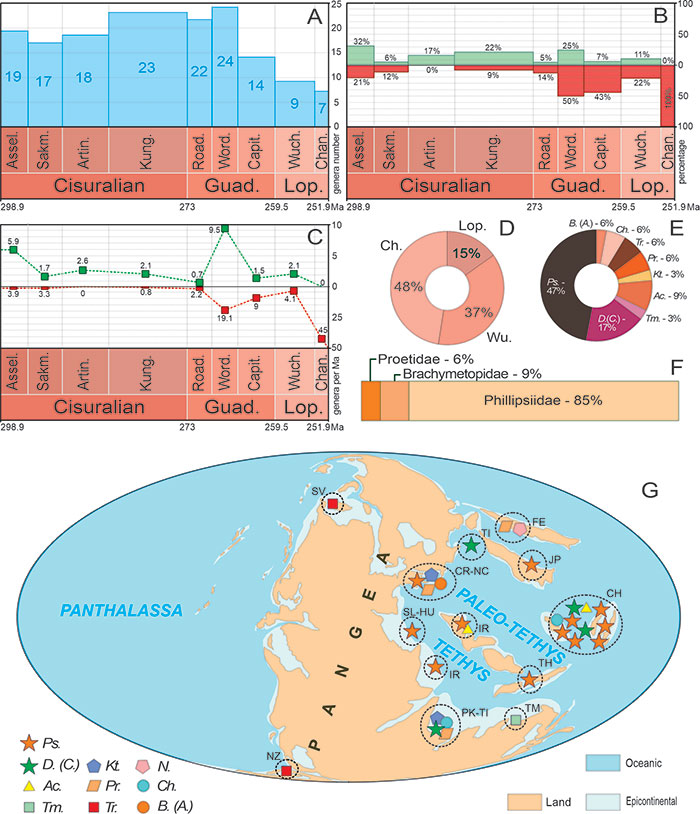FIGURE 1. Stratigraphic subdivision of the Permian system according to the International Stratigraphic Scale (ISC) 2023 and correlation with regional divisions. Built in the program TSCreator version 8.1, with various additions and changes by the author.

FIGURE 2. Main Lopingian sections of the North Caucasus: A – Urushten; B – Gefo Mountain; C – Khamyshki (Raskol-Skala Mountain); D – Nikitinskaya Ravine; E – Khuko Mountain; F – Beskos; G – Severnaya Ravine; H – Armovka Ravine.

FIGURE 3. Lopingian sections of North Caucasus: A – The main Lopingian sections of the Malaya Laba and Bolshaya Laba basins in the North Caucasus, according to Kotlyar et al. (2004). B – the schematic profile across Raskol-Skala Mount near the village of Khamyshki according to Miklouho-Maclay (1956) with modifications. C – the schematic profile across the Severnaya and Nikitinskaya ravines, on the right bank of the Malaya Laba River; according to Miklouho-Maclay (1956) with modifications. D – reef limestones of the Urushten Formation in Nikitinskaya ravine, photo by author, 2019.
1 – Cisuralian red conlomerates and sandstones; 2 – reef limestones of the Urushten Formation; 3 – Upper Triassic sandstones; 4 – Lower Jurassic sandstones and shales; 5 – thrust line; 6 – Pennsylvanian sandstones and shales; 7 – Cisuralian sandstones and conlomerates; 8 – algal-foraminiferal limestones of the Nikitino Formation; 9 – сlay shales of the Urushten Formation; 10 – Lower Trias sandstones.

FIGURE 4. Pygidium of Brachymetopus (Acutimetopus) caucasicus Licharew in Weber, 1944; CNIGRmuseum, No. 86/5217; Lopingian, Changhsingian, Urushten or Nikitino formation; Russia, Krasnodar Krai, Malaya Laba River, Nikitinskaya Ravine. Scale bar equals 5 mm.

FIGURE 5. Paraphillipsia urushtensis sp. nov.; A, B – cranidium, CNIGRmuseum, No. 61/5217; C – cephalon, CNIGRmuseum, No. 62/5217, holotype; D – cranidium, CNIGRmuseum, No. 65/5217; E – cranidium, CNIGRmuseum, No. 66/5217; F – pygidium with several pleura of thorax, CNIGRmuseum, No. 64/5217; G – pygidium, CNIGRmuseum, No. 68/5217; H – pygidium, CNIGRmuseum, No. 63/5217; I – pygidium, CNIGRmuseum, No. 67/5217; J – pygidium, CNIGRmuseum, No. 69/5217. Scale bars equal 5 mm.

FIGURE 6. Comparison of Paraphillipsia karpinskyi Tumanskaya, 1935 (A-E) with P. urushtensis sp. nov. (F,G): A-C – complete enrolled exoskeleton, CNIGRmuseum, No. 59/9733, holotype; D – P. karpinskyi cephalon reconstruction; E – P. karpinskyi pygidium reconstruction; F – P. urushtensis cephalon reconstruction; G – P. urushtensis pygidium reconstruction. Scale bar equals 5 mm.

FIGURE 7. Kathwaia caucasica (Weber, 1944); A,B – cephalon, CNIGRmuseum, No. 53/5217; C,D – cranidium (cast), CNIGRmuseum, No. 54/5217; E – incomplete glabella (cast), CNIGRmuseum, No. 55/5217; F – glabella (cast), CNIGRmuseum, No. 58/5217; G – incomplete glabella (cast), CNIGRmuseum, No. 57/5217; H – glabella (cast), CNIGRmuseum, No. 56/5217; I – incomplete glabella (cast), CNIGRmuseum, No. 59/5217; J – incomplete pygidium (cast with a fragment of exoskeleton), CNIGRmuseum, No. 87/5217; K – incomplete pygidium, CNIGRmuseum, No. 88/5217, lectotype. Scale bars equal 5 mm.
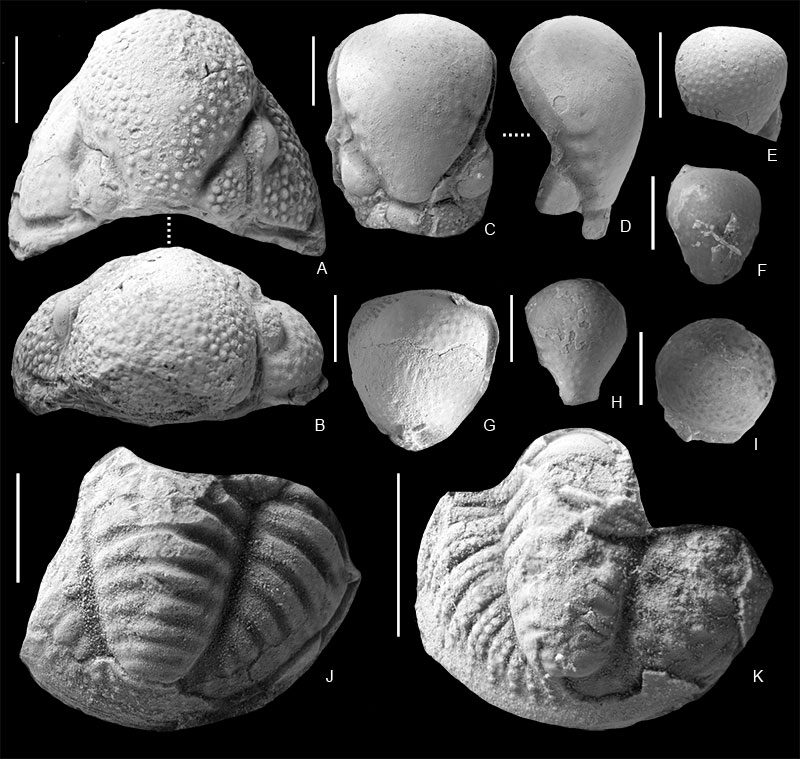
FIGURE 8. Members of Kathwaia Grant, 1966; A-K – K. caucasica (Weber, 1944): A-D – complete enrolled exoskeleton, USNM PAL, No. 145320, Lopingian, Wuchiapingian, Pakistan, Salt Range, Kathwai-Kushab, holotype of K. capitorosa Grant, 1966 (junior subjective synonym of K. caucasica); E, F – cephalon, CNIGRmuseum, No. 53/5217; G, H – pygidium, CNIGRmuseum, No. 87/5217, general view, left half (G) and an enlarged fragment of pleural ribs with rows of tubercles (H); I – pygidium, CNIGRmuseum, No. 87/5217; J, K – K. girtyi (Tumanskaya, 1935), Guadalupian, Roadian; Crimea, Martha River, Kichkhi-Burnu Block; J – thorax with pygidium, CNIGRmuseum, No. 137/9733; K – pygidium, CNIGRmuseum, No. 139/9733. Roman numerals refer to pleural ribs, while Arabic numerals denote axial rings. Scale bars equal 5 mm.
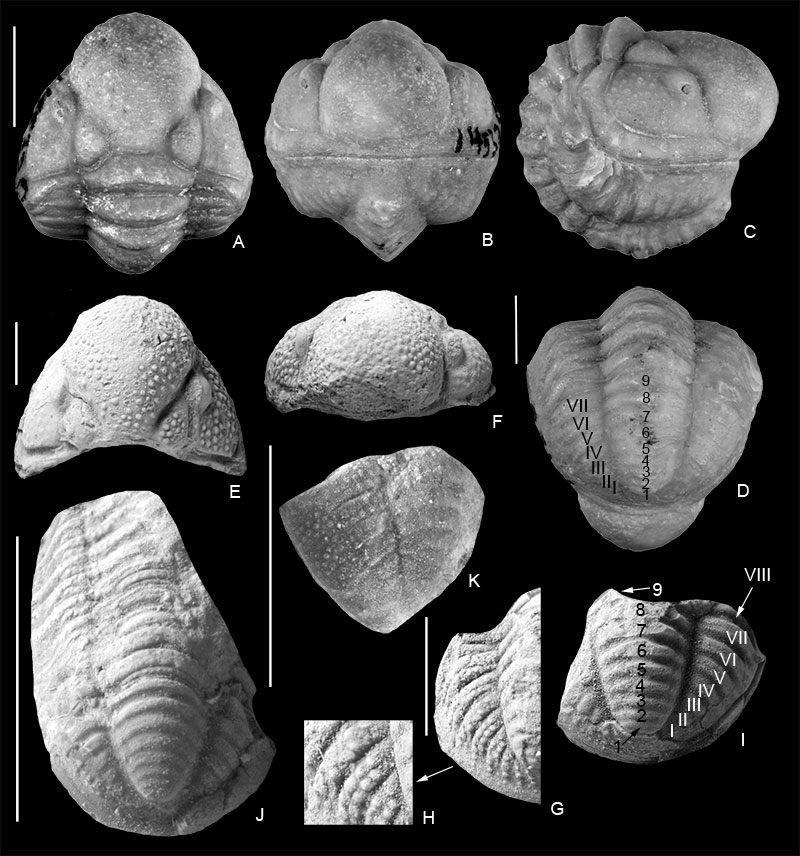
FIGURE 9. The difference between members of Ditomopyge (Ditomopyge), Ditomopyge (Carniphillipsia) and Pseudophillipsia; A – D. (D.) scitula, type species; B – D. (C.) ovigalis, type species; C – D. (C.) paffenholzi; D – Ps. sumatrensis, type species.
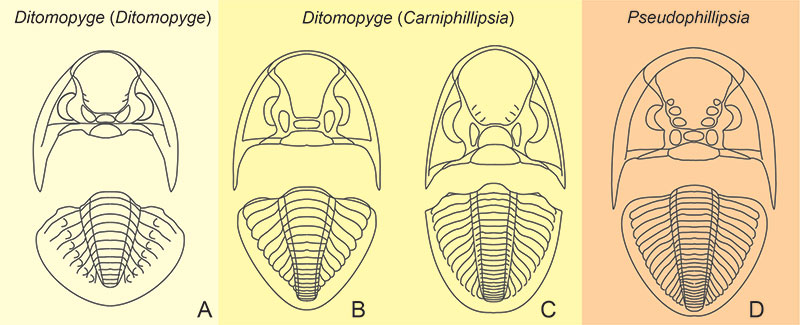
FIGURE 10. Pseudophillipsia from Lopingian of North Caucasus (A-J) and Guadalupian of Crimea (K); A - D – Ps. solida Weber, 1944: A, B – cephalon, CNIGRmuseum, No. 79/5217; C – incomplete cranidium, CNIGRmuseum, No. 80/5217; D – incomplete cranidium, CNIGRmuseum, No. 81/5217; E, F, G, H – Ps. (?) caucasica Weber, 1944: E – pygidium, CNIGRmuseum, No. 71/5217; F – pygidium, partial imprint, CNIGRmuseum, No. 72/5217; G – pygidium, CNIGRmuseum, No. 73/5217; H – deformed pygidium, CNIGRmuseum, No. 74/5217; I, J – Ps. (?) cf. mustafensis Tumanskaya, 1935: I – pygidium, CNIGRmuseum, No. 77/5217; J – fragment of pygidium, CNIGRmuseum, No. 78/5217; K – Ps. (?) mustafensis Tumanskaya, 1935, pygidium, CNIGRmuseum, No. 97/9733. Scale bars equal 5 mm.
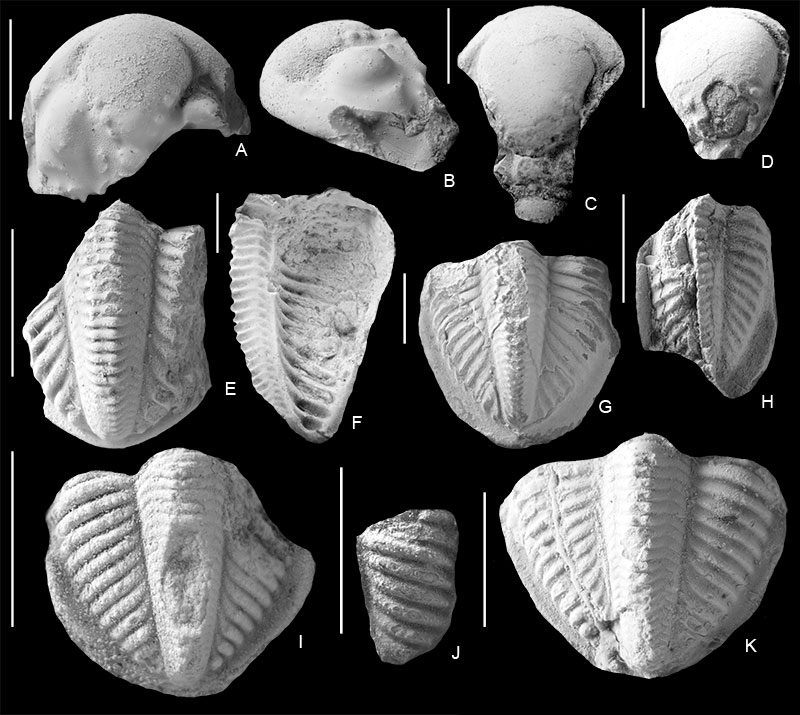
FIGURE 11. Lopingian trilobite localities: SV – Spitsbergen, SL – Slovenia, HU – Hungary, CR – Crimea, NC – North Caucasus, FE – Far East, IR – Iran, PK – Pakistan, TI – Tibet, CH – Southern China, TH – Thailand, JP – Japan, TM – Timor, NZ – New Zealand.
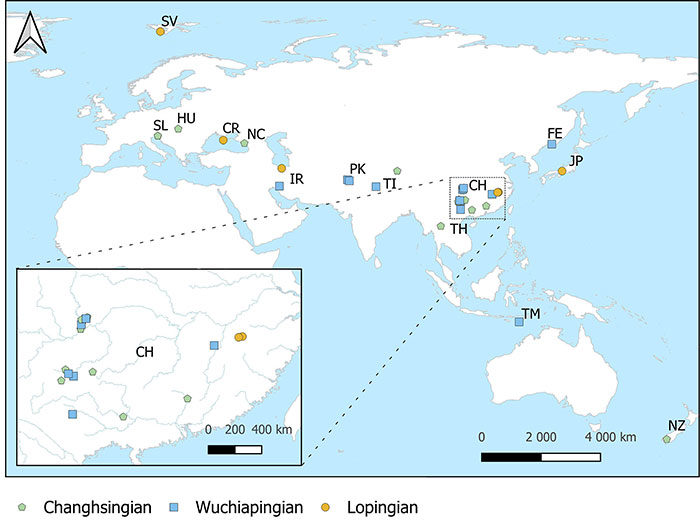
FIGURE 12. Schematic reconstructions of all known species and species determined in open nomenclature of the Lopingian trilobites. A – Brachymetopus (Acutimetopus) caucasicus Licharew in Weber, 1944, pygidium, Changhsingian of North Caucasus; B – Cheiropyge himalayensis Diener, 1897, pygidium, Wuchiapingian (?) of Tibet; С – Ch. (?) gaoanensis (Zhang, 1982), cephalon (С.1) and pygidium (С.2), Wuchiapingian of Southern China; D – Triproetus borealis Kobayashi, 1987, complete exoskeleton, Lopingian of Spitsbergen; E – Tr. sp., pygidium, Changhsingian (?) of New Zeeland; F – Kathwaia caucasica (Weber, 1944), cephalon (F.1) and pygidium (F.2), Lopingian of North Caucasus and Pakistan; G – Paraphillipsia urushtensis sp. nov., cephalon (G.1) and pygidium (G.2), Changhsingian of North Caucasus; H – Par. (?) middlemissi Diener, 1897, pygidium, Wuchiapingian (?) of Tibet; I – Timorcranium parvulum (Beyrich, 1865), cranidium, Wuchiapingian of Timor; J – Acropyge weggeni Hahn et Hahn, 1981, pygidium posteriorly (J.1) and superiorly (J.2), Lopingian of Iran; K – Ac. brevica Yin, 1978, cranidium (K.1) and pygidium (K.2), Changhsingian of Southern China; L – Ac. multisegmenta Yin, 1978, pygidium, Changhsingian of Southern China; M – Ditomopyge (Carniphillipsia) fatmii Grant, 1966, cephalon (M.1) and pygidium (M.2), Wuchiapingian of Pakistan; N – Dit. (C.) chongqingensis (Lu, 1974), cephalon (N.1) and pygidium (N.2), Changhsingian of Southern China; O – Dit. (C.) heshanensis (Qian, 1977), complete exoskeleton, Wuchiapingian of Southern China; P – Dit. (C.) lui (Kobayashi et Hamada, 1984a), cranidium (P.1) and pygidium (P.2), Wuchiapingian of Southern China; Q – Dit. (C.) raggyorcakaensis (Qian, 1981), cranidium, Changhsingian of Tibet; R – Dit. (C.) pyriformis (Qian, 1977), cranidium, Changhsingian of Southern China; S – Pseudophillipsia (?) hungarica (Schréter, 1948), pygidium, Changhsingian of Hungary; T – Ps. (?) cf. hungarica (Schréter, 1948), pygidium, Changhsingian of Slovenia; U – Ps. anshunensis Qian, 1977, cephalon (U.1) and pygidium (U.2), Wuchiapingian of Southern China; V – Ps. solida Weber, 1944, cephalon, Changhsingian of North Caucasus; W – Ps. solida Weber, 1944, cranidium, Changhsingian of Slovenia; X – Ps. n. sp., aff. sumatrensis (Roemer, 1880), cephalon, Changhsingian of Slovenia; Y – Ps. qinglongensis Qian, 1977, cephalon, Changhsingian of Southern China; Z – Ps. hanaokensis Kobayashi et Hamada, 1984b, cranidium (Z.1) and pygidium (Z.2), Lopingian of Japan; AA – Ps. shanggaoensis Zhang, 1982, cranidium, Wuchiapingian of Southern China; AB – Ps. (?) aff. ozawai Kobayashi et Hamada, 1984b, pygidium, Changhsingian of Thailand; AC – Ps. obtusicauda (Kayser, 1883), cranidium (AC.1) and pygidium (AC.2), Lopingian of Southern China; AD – Ps. (?) subcircularis Qian, 1977, pygidium, Wuchiapingian of Southern China; AE – Ps. (?) cf. mustafensis Tumanskaya, 1935, pygidium, Changhsingian of North Caucasus; AF – Ps. (?) parvizii Lerosey-Aubril, 2012, pygidium, Wuchiapingian of Iran; AG – Ps. (?) caucasica Weber, 1944, pygidium, Changhsingian of North Caucasus; AH – Ps. (?) aff. caucasica Weber, 1944, Lopingian of Iran.
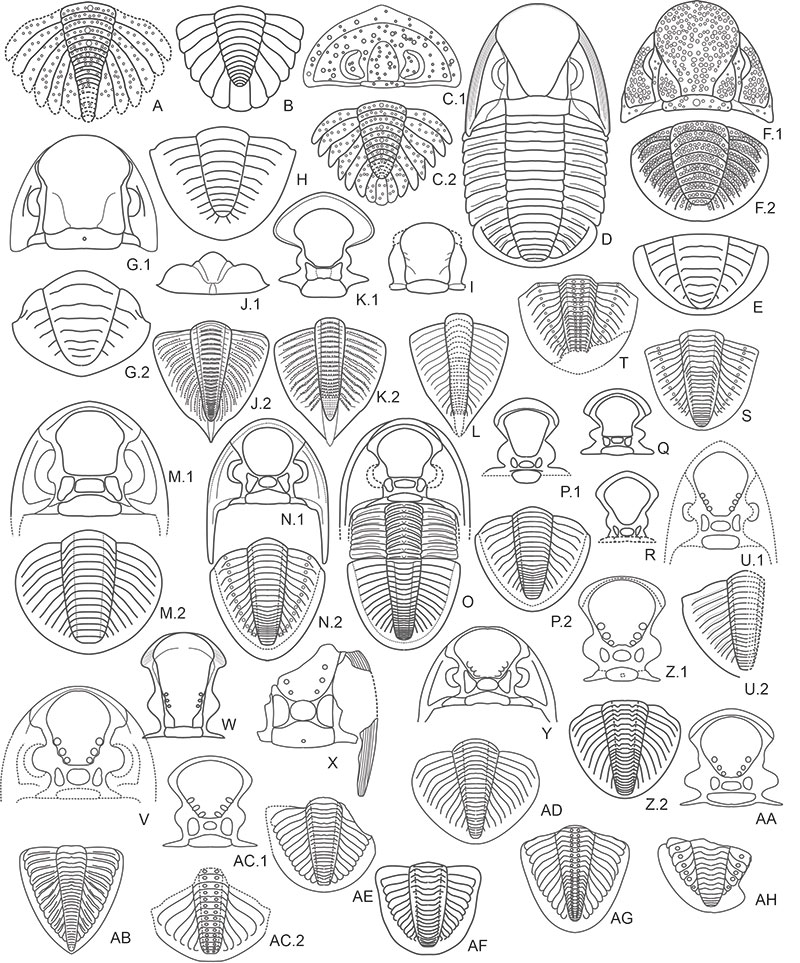
FIGURE 13. Infographics for this article. A – diversity of trilobite genera during the Permian; B – levels of origination (green bars) and extinction (red bars) of trilobite genera during the Permian; C – rates of origination (green curve) and extinction (red curve) of trilobite genera during the Permian; D – percentage of known Lopingian trilobite species; E – percentage of the number of species within the genera of Lopingian trilobites; F – percentage of Lopingian trilobite genera within families; G – trilobite genera on the palaeogeographic map of the world in the Lopingian (according to Blakey, 2016 with modifications and additions). Abbreviations: Wu – Wuchiapingian; Ch – Changhsingian; Lop – Lopingian without specifying the stage; SV – Spitsbergen; SL – Slovenia; HU – Hungary; CR – Crimea; NC – North Caucasus; FE – Far East; IR – Iran; PK – Pakistan; TI – Tibet; CH – Southern China; TH – Thailand; JP – Japan; TM – Timor; NZ – New Zealand; Ps – Pseudophillipsia; D. (C.) – Ditomopyge (Carniphillipsia); Ac – Acropyge; Tm – Timorcranium; Kt – Kathwaia; N – Neogriffithides (?); Pr – Paraphillipsia; Tr – Triproetus; Ch – Cheiropyge; B. (A.) – Brachymetopus (Acutimetopus).
